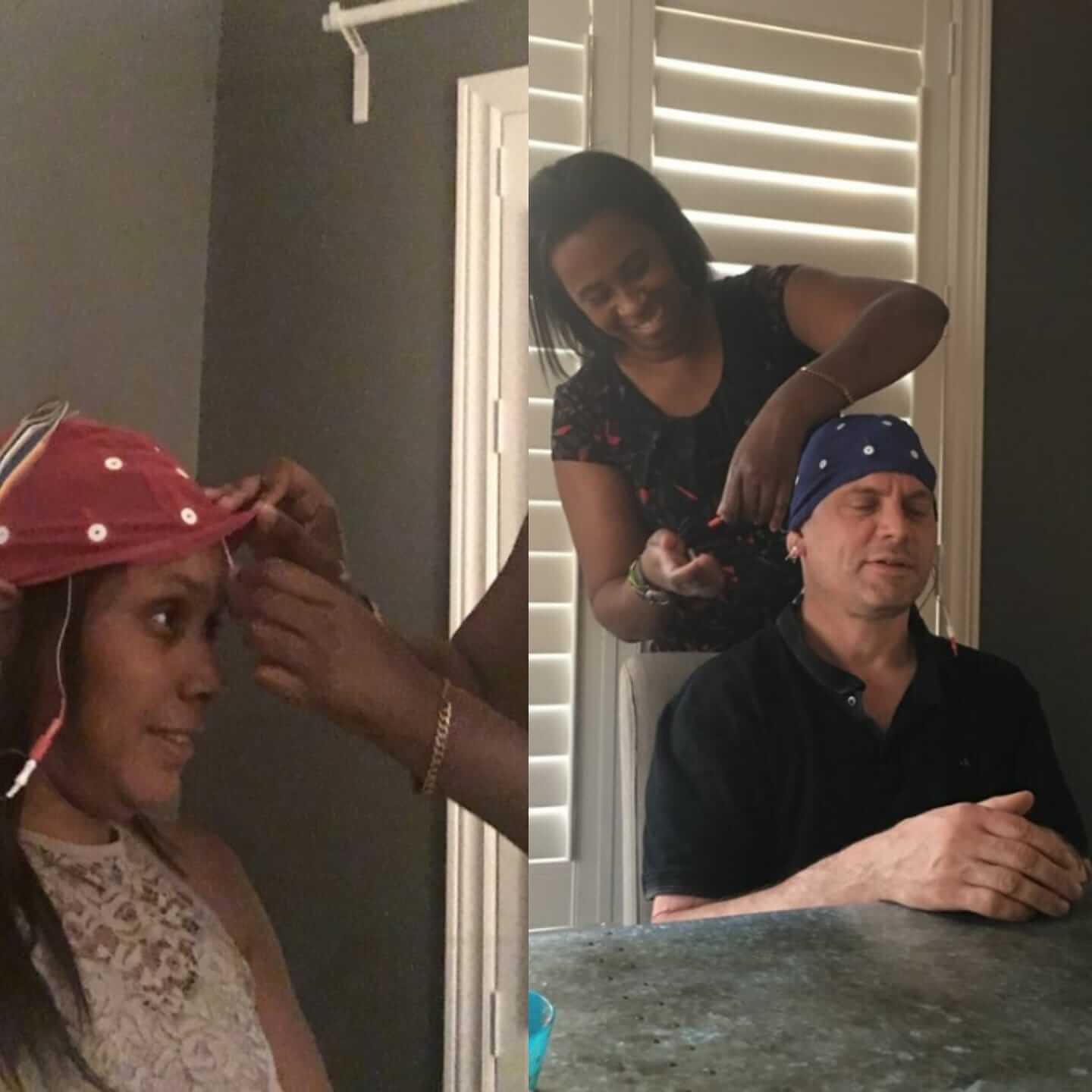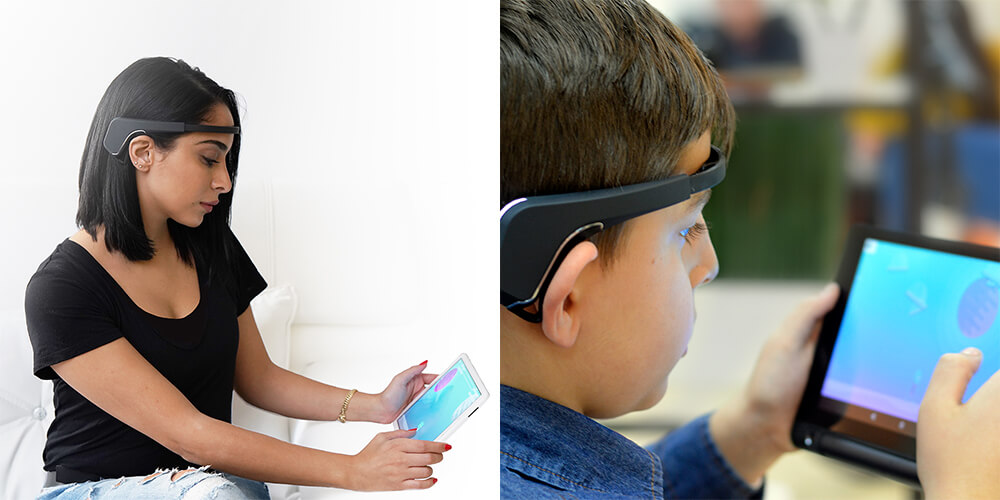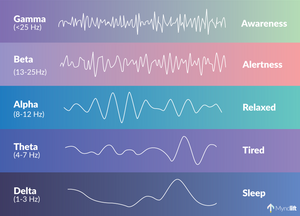NEUROFEEDBACK
What is neurofeedback?

A video introduction for ISNR courtesy of the Center for Brain Training.
Neurofeedback (NFB) is a non-invasive type of biofeedback that measures real-time displays of brain wave activity—by electroencephalography (EEG) which can be used as feedback to teach self-regulation. Sensors are placed on the scalp to measure activity and it uses sound or video which provides the brain with positive feedback for desired brain activity.
It first started in 1924, when Hans Berger, the German psychiatrist connected a couple of electrodes to a patient's scalp and measured a small current using a galvanometer. Then neurofeedback became popular in the 1960's when Joe Kamiya did alpha brain wave experiments and showed that brain wave activity could be changed.
Research shows neurofeedback may be a useful intervention for a range of brain-related conditions including ADHD, dyslexia, pain, aggression, anxiety, PTSD, depression, addictions, OCD, headaches, insomnia, sensory processing difficulties, working memory deficit, and brain trauma.
2 options for Neurofeedback (in clinic or remote)
At Lisa's Holistic Rehab & Neurofeedback, we have two options to offer you based on your profile. We have the in-clinic version for people who have been struggling with their symptoms for a long time and we have the Neurofeedback 2 Go (NFB2Go) which is a remote version that can be done in the comfort of your home with a little training. NFB2Go is great for people who don't necessarily have a diagnosis and want to improve peak performance (memory, attention, faster decisions, etc), to be more present to a loved one, manage emotions, or to deal better with your chaotic work/school/home environment.
The process
First, we want to make sure NFB is right for you. We will conduct a clinical interview and administer tests to establish a baseline to measure your starting point in order to track progress. We may assign you with weekly homework assignments, such as cognitive exercises or breathing & relaxation exercises. We may also refer you to other professionals to make dietary or family restructuring suggestions so that you will get the most from your training experience. Some clients are referred to medical or naturopathic doctors in order to rule out allergies and other conditions that may hamper training progress.
Second, we will conduct an evaluation of brainwave activity called a qEEG (quantitative electroencephalography) to help us to choose a protocol that best fits your current brain functioning.
For the in clinic version - the qEEG has 20 sensors that are placed on the scalp to measure brainwave activity using a cap and gel placed on the scalp and a computer to read and record the brainwaves.
For NFB2Go - you will purchase the hardware, download the app on your smartphone or tablet, enter your clinician's unique code, and be guided step by step on how to collect the data. The results will appear on the clinician's dashboard where the training protocols are created.
Third, we will develop a therapy plan that includes homework and in clinic/ remote training sessions. After 10-12 training sessions we will re-evaluate your progress. Training will continue if progress is being made (less symptoms). Once it becomes clear that therapy goals have been met, training sessions will taper off until Neurofeedback learning has been solidified.
Contact us today to see which option of Neurofeedback is right for you.


Types of Brain waves

Delta Waves
Frequency range: 0 Hz to 4 Hz (Slowest)
These are the slowest brain waves in humans. They are associated with the deepest levels of relaxation and restorative sleep. Sufficient production of delta waves helps us feel rejuvenated after we wake up from a good night's sleep.
Abnormal delta activity in an individual may experience learning disabilities or have difficulties maintaining conscious awareness (ie. brain injuries).
Theta Waves
Frequency range: 4 Hz to 8 Hz (Slow)
This frequency range is involved in daydreaming, sleep, and help us to feel deep and raw emotions. Also known as the deeply relaxed, semi-hypnotic state. Theta can help improve our intuition and creativity.
Too much theta activity may cause ADHD symptoms (hyperactivity, impulsivity, and inattentivenes) and depression.
Too little theta activity may cause anxiety, poor awareness of emotional state, and stress.
Alpha Waves
Frequency range: 8 Hz to 12 Hz (Moderate)
Alpha is the resting state for the brain. Alpha waves connects our conscious thinking and subconscious mind. It is dominant during quiet flowing thoughts and meditative/mindfulness states when we are being here in the present moment. It helps us calm down when necessary and promotes feelings of deep relaxation.
Too much leads to daydreaming and inability to focus. Too little results in anxiety, high stress, insomnia, and OCD.
Beta Waves
Frequency range: 12 Hz to 40 Hz (High)
Beta brainwaves dominate when we are awake particularly when our attention is directed towards cognitive tasks such as when we are alert, attentive, writing, reading, engaged in problem solving, logical thinking, judgment, socialization, decision making, or focused mental activity.
There are 3 levels of Beta: Lo-Beta (idle), Beta (when you are figuring something out), Hi-Beta (highly complex thought, high anxiety, or excitement which takes a lot of energy).
Too much causes anxiety, high arousal, inability to relax, stress. Too little causes daydreaming, ADHD symptoms, depression, or poor cognition.
Articles
Peniston, E. G., & Kulkosky, P. J. (1991).Medical Psychotherapy, 4(1), 47-60.
Assessment-guided neurofeedback for autistic spectrum disorder.
Coben, R., & Padolsky, I. (2007).Journal of Neurotherapy, 11(1), 5-23.
Lens neurofeedback treatment with fetal alcohol spectrum disorder and neglect.
Journal of Neurotherapy, 16(1), 47-52. Hammond, D. C. (2012).
Sokhadze, T. M., Cannon, R. L., & Trudeau, D. L. (2008).Journal of Neurotherapy, 12(1), 5-43.
Validating the efficacy of neurofeedback for optimising performance.
Gruzelier, J., Egner, T., & Vernon, D. (2006).Progress in brain research, 159, 421-431.
